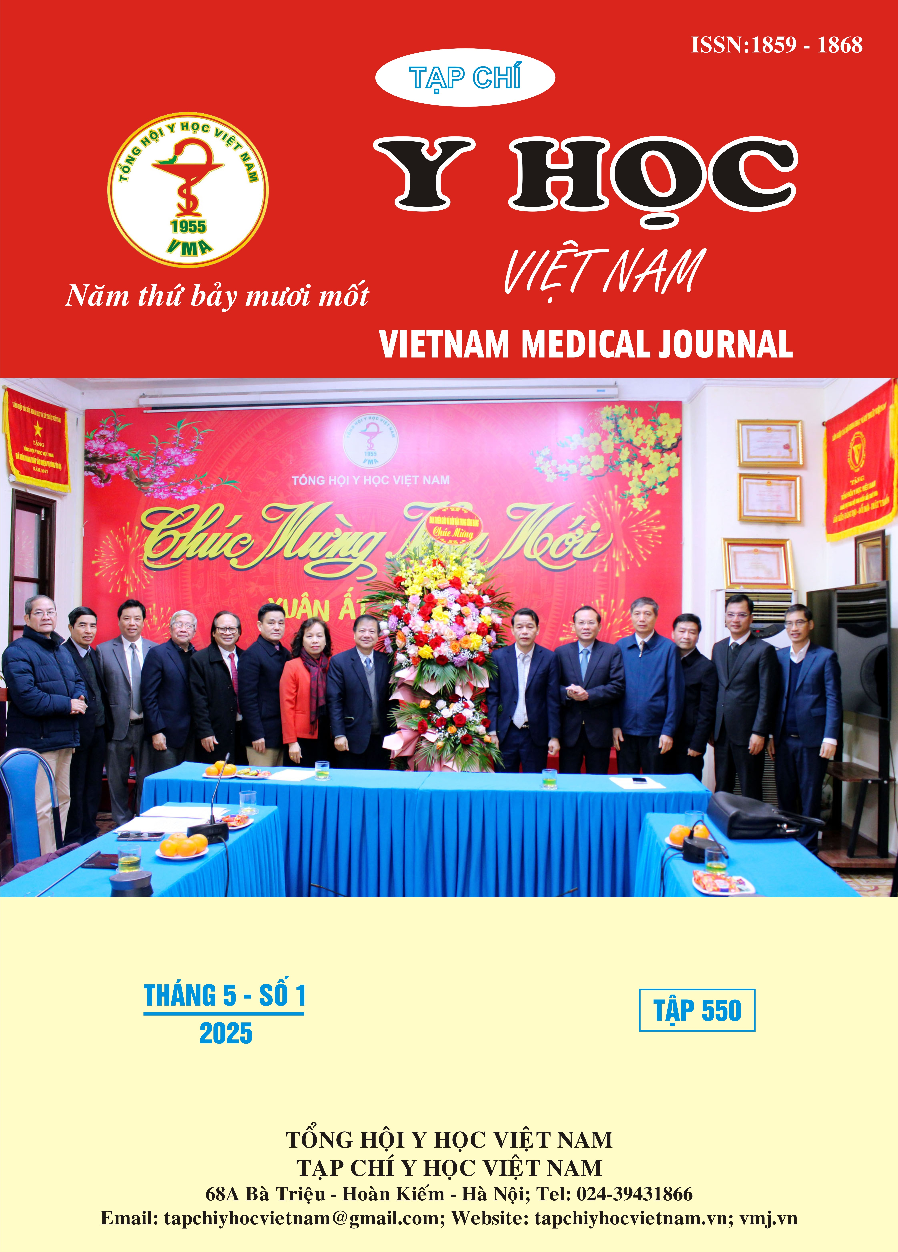SELECTION OF PATIENTS WITH PANCREATIC DUCT-RELATED DISORDERS FOR ENDOSCOPIC RETROGRADE CHOLANGIOPANCREATOGRAPHY BASED ON CLINICAL AND PARA-CLINICAL CHARACTERISTICS
Main Article Content
Abstract
Introduction: Pancreatic duct-related diseases, including benign causes (chronic pancreatitis, pancreatic pseudocyst, pancreatic fistula) and malignant causes (pancreatic cancer, Vater’s ampullary tumor), can lead to ductal obstruction, pancreatic dysfunction, and a significant reduction in quality of life. Surgery was previously the primary treatment modality; however, it carries a high risk of complications. Endoscopic retrograde cholangiopancreatography (ERCP) with pancreatic stent placement is currently a less invasive approach that helps alleviate symptoms and improve patient prognosis. However, patient selection criteria and the assessment of intervention effectiveness remain inconsistent, particularly in the Vietnamese clinical setting. Subject and methods: 44 patients with dilated pancreatic ducts were indicated for ERCP with pancreatic stent placement at the 108 Military Central Hospital from January 2021 to March 2024. Study design: A retrospective study describing the clinical, laboratory, and imaging characteristics related to the pancreatic duct. Data was analyzed using SPSS 22.0. Results: The mean patient age was 60.4 ± 15.6 years, with 81.8% male (male-to-female ratio = 4.5:1). Disease distribution: 77.3% of patients had pancreatic lesions, including Pancreatic head tumor: 31.8%, Pancreatic cyst: 18.2%, Pancreatic stones: 15.9%; While 22.7% of patients had extra-pancreatic lesions, including Vater’s ampullary tumor: 9.1%, Distal common bile duct tumor: 6.7%. Clinical symptoms before intervention: Abdominal pain: 68.2% of patients (45.5% mild, 22.7% moderate), Fever: 20.5% of patients. Imaging findings: 100% of patients had pancreatic duct dilatation, with a median diameter of 6.4 mm. In conclusion, ERCP with pancreatic stent placement is a minimally invasive and effective treatment modality suitable for pancreatic diseases causing ductal obstruction. Patient selection should be based on comprehensive clinical and laboratory evaluations to optimize treatment outcomes and minimize complications.
Article Details
Keywords
Pancreatic diseases, endoscopic retrograde cholangiopancreatography, pancreatic duct stenting
References
2. Dumonceau, J.M., et al., ERCP-related adverse events: European Society of Gastrointestinal Endoscopy (ESGE) Guideline. Endoscopy, 2020. 52(2): p. 127-149.
3. Ito, K., et al., EFFICACY AND SAFETY OF PROPHYLACTIC PANCREATIC DUCT STENT (PIT-STENT) PLACEMENT IN PATIENTS AT HIGH RISK OF POST-ERCP PANCREATITIS. Digestive Endoscopy, 2007. 19(3): p. 130-133.
4. Mangiavillano, B., et al., Outcome of stenting in biliary and pancreatic benign and malignant diseases: A comprehensive review. World J Gastroenterol, 2015. 21(30): p. 9038-54.
5. Phillip, V., et al., Pancreatic stenting to prevent post-ERCP pancreatitis: a randomized multicenter trial. Endosc Int Open, 2019. 7(7): p. E860-E868.
6. Testoni, P.A., Endoscopic pancreatic duct stent placement for inflammatory pancreatic diseases. World J Gastroenterol, 2007. 13(45): p. 5971-8.
7. Weber, A., et al., Endoscopic stent therapy in patients with chronic pancreatitis: a 5-year follow-up study. World J Gastroenterol, 2013. 19(5): p. 715-20.
8. Wilcox, C.M., et al., Chronic pancreatitis pain pattern and severity are independent of abdominal imaging findings. Clin Gastroenterol Hepatol, 2015. 13(3): p. 552-60; quiz e28-9.


